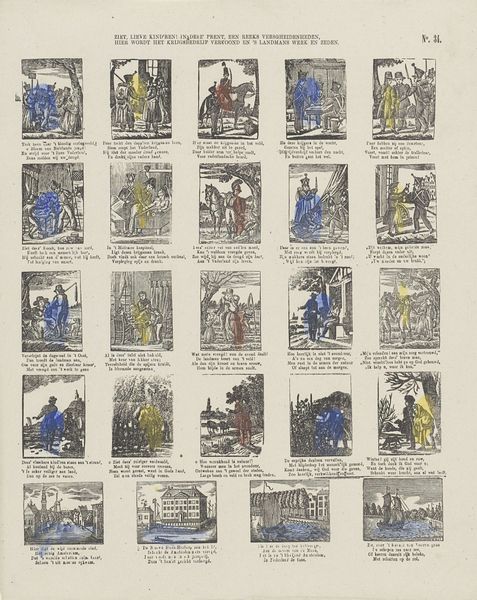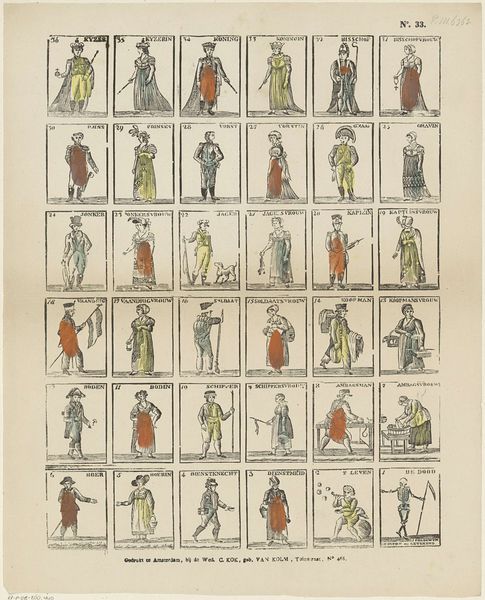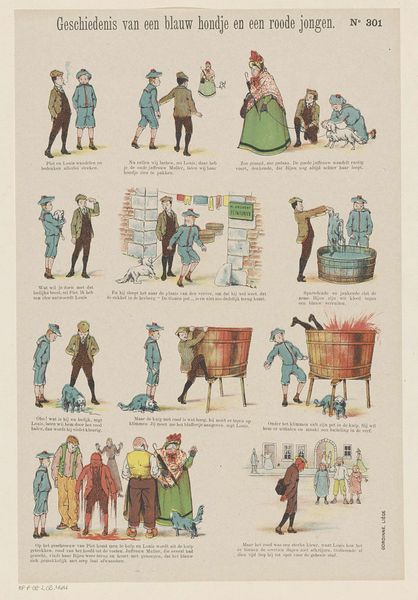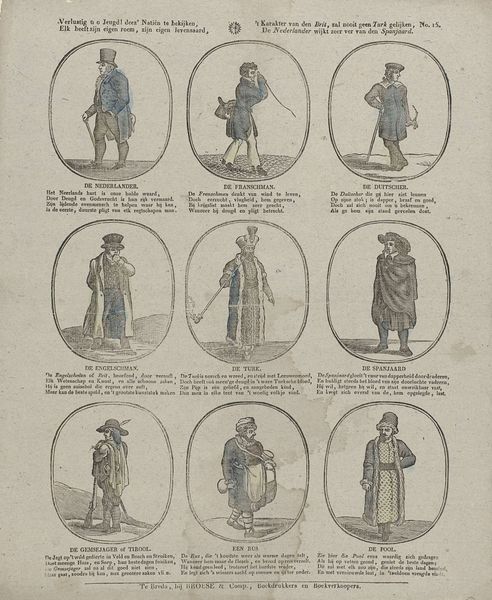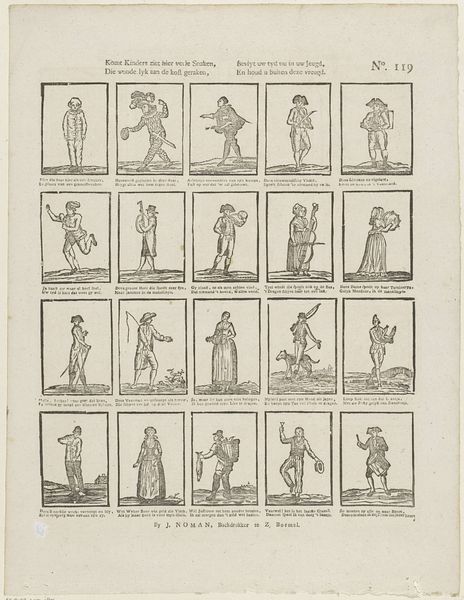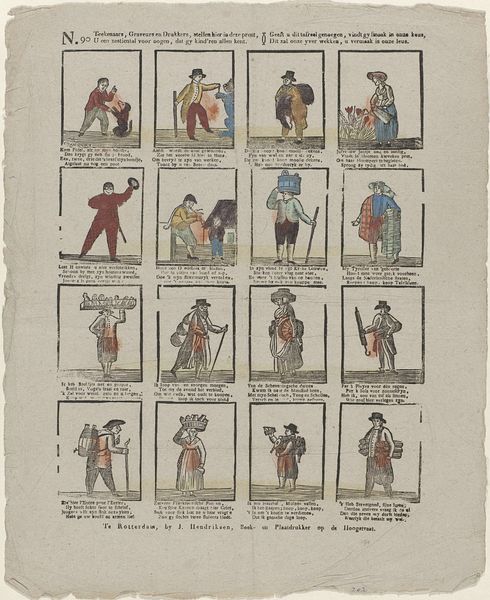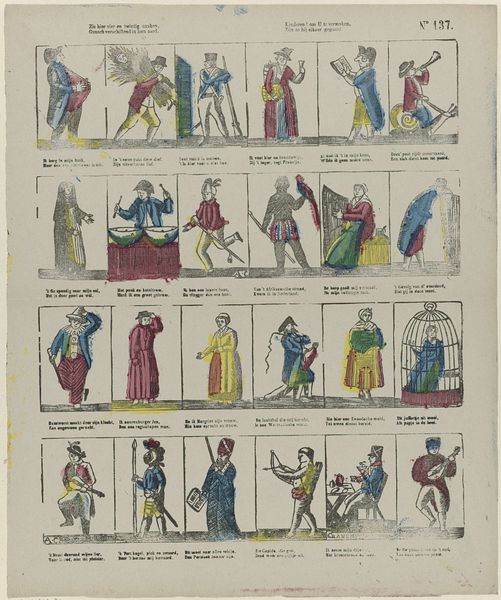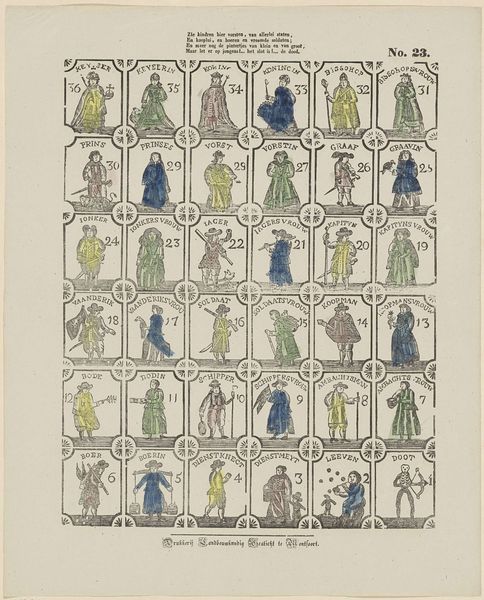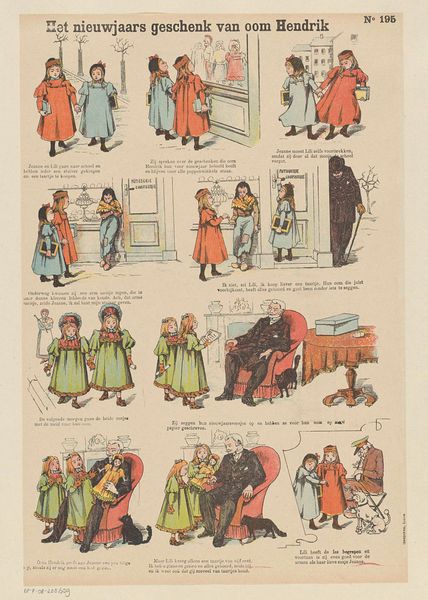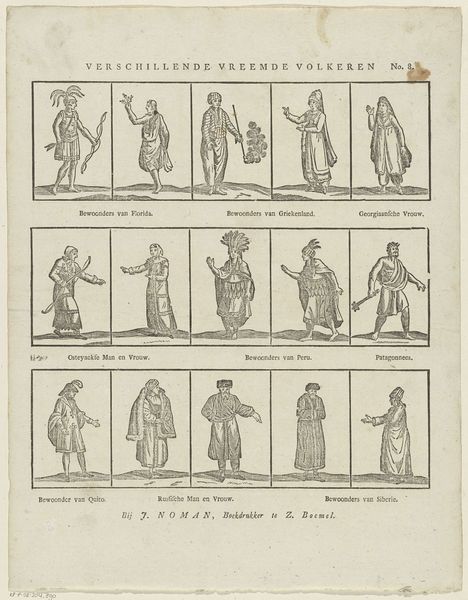
Laat deze, Zwitsersche tafreelen, / O kind'ren, uwen kunstmin streelen, / En leert er uit, dat werkzaamheid, / En eenvoud zegen om zich spreidt 1850 - 1870
0:00
0:00
graphic-art, print
#
graphic-art
#
comic strip sketch
#
imaginative character sketch
#
quirky sketch
#
narrative-art
# print
#
sketch book
#
personal sketchbook
#
idea generation sketch
#
sketchwork
#
sketchbook drawing
#
genre-painting
#
storyboard and sketchbook work
#
sketchbook art
Dimensions: height 394 mm, width 315 mm
Copyright: Rijks Museum: Open Domain
This print, dating from around the mid-19th century, was made by Willem Bal. Its charming depictions of Swiss scenes and costumes offer a window into the culture of the time. Looking at the images, we see idealized representations of Swiss life. Each figure is carefully rendered, emphasizing regional costumes and traditional activities. This visual encoding speaks to the growing interest in national identity and cultural preservation during the 19th century. Institutions like museums and ethnographic societies played a crucial role in shaping these ideas, promoting a romanticized view of rural life. As a social historian, I'm interested in how this print reflects the values of its time. Is it simply a celebration of Swiss culture, or does it also reflect the social and political tensions of a rapidly changing Europe? By exploring sources such as contemporary travel accounts, newspapers, and museum collections, we can gain a deeper understanding of the print's meaning and its place in history.
Comments
No comments
Be the first to comment and join the conversation on the ultimate creative platform.



